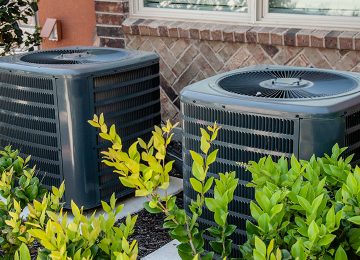Now that the fall season is here, temperatures are going to begin dropping steadily. This means that you’re most likely going to begin using your furnace on a much more regular basis. To ensure that your furnace is ready to go for when winter hits, you should schedule a fall furnace inspection.
Fall Furnace Inspection
The following are the steps our HVAC technicians will take in order to thoroughly inspect your furnace for potential issues:
- Clean the combustion chamber – The combustion chamber is where fuel and air combine and are ignited in order to generate heat. Soot can build up during this process, which can cause the chamber walls to corrode. The carbon that’s built up needs to be scraped out to help prevent corrosion.
- Inspect the flue pipe – The exhaust flue will be carefully inspected for any holes or damage. The presence of holes can result the leaking of carbon monoxide. Holes can be patched, but flues that have corroded will need to be replaced.
- Replace the oil filter – The oil filter helps to prevent impurities from clogging the oil-burner nozzle. A dirty filter makes the furnace run less efficiently and will need to be replaced with a new one.
- Test the efficiency – The technician will use a combustion analyzer in order to measure the gasses in the exhaust flue. This will help the inspector determine how efficient the furnace is. The technician will also adjust the air gates of the burner to ensure the proper ratio of fuel to air. Additionally, the technician will inspect the color of the flame and the shape of the igniter while also replacing the oil nozzle.
Signs You Need a Furnace Inspection
During the basic inspection, the HVAC technician will identify if there’s a need for repairs or replacement. Even though it’s a good idea to have your furnace inspected every fall, you should make sure to schedule an inspection as soon as possible if you spot any of the following signs:
- Your heating bills are too high – If your energy bills skyrocket once you begin using your furnace, there’s a problem with its efficiency.
- Your furnace isn’t producing heat – Whether your furnace isn’t working at all or isn’t producing heat at the level you need, there’s most likely one of several problems at the source.
- Your furnace is making strange sounds – Your furnace should be relatively quiet during operation. Strange sounds are a sign that a component has broken or is about to break.
- The pilot light is yellow – The pilot light should burn blue. If it burns yellow, there’s an issue with the combustion process.
- Your furnace keeps cycling on and off – There could be a number of problems causing your furnace to keep turning on and off.
To ensure that your furnace runs efficiently, effectively and safely, schedule a fall furnace inspection in Denver or the surrounding areas by contacting at CT Heating & Air today.

![Fall Furnace Inspection In Denver Now that the fall season is here, temperatures are going to begin dropping steadily. This means that you’re most likely going to begin using your furnace on a much more regular basis. To ensure that your furnace is ready to go for when winter hits, you should schedule a fall furnace inspection. Fall Furnace Inspection […]](https://ctheatingandair.com/wp-content/uploads/fall-furnace-inspection-denver-750x420.jpg)


